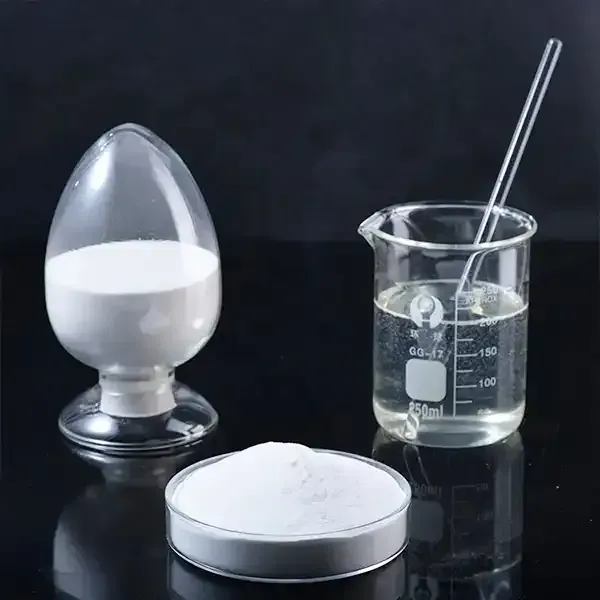Hydroxyethyl Cellulose A Versatile Polymer in Modern Applications
Hydroxyethyl cellulose (HEC) is a non-ionic, water-soluble polymer derived from cellulose, a natural polymer found in the cell walls of plants. As a derivative of cellulose, HEC maintains many of the structural properties of its parent compound while possessing unique characteristics that make it suitable for a variety of applications across different industries. This article explores the properties, production methods, and diverse applications of hydroxyethyl cellulose.
Properties of Hydroxyethyl Cellulose
HEC is characterized by its excellent water retention, thickening capabilities, and film-forming abilities. These properties stem from its chemical structure, which consists of hydroxyethyl groups grafted onto the cellulose backbone. The presence of these groups enhances the solubility of HEC in water, making it easier to incorporate into various formulations.
One of the most notable properties of hydroxyethyl cellulose is its ability to create viscous solutions even at low concentrations. This feature makes it an effective thickening agent that can improve the texture and stability of products. Furthermore, HEC is relatively stable over a wide pH range and is resistant to heat, making it suitable for use in situations where temperature fluctuations occur.
Production of Hydroxyethyl Cellulose
The production of hydroxyethyl cellulose involves the modification of cellulose through a chemical process known as etherification. In this process, cellulose is reacted with ethylene oxide in an alkaline medium, which introduces hydroxyethyl groups to the cellulose molecule. The degree of substitution—the average number of hydroxyethyl groups per glucose unit in the cellulose chain—can be controlled during synthesis, allowing manufacturers to tailor the properties of HEC for specific applications.
Quality control during production is essential to ensure consistency in the product's viscosity and solubility
. As such, various analytical techniques are employed to assess the properties of hydroxyethyl cellulose, including viscosity measurements and molecular weight determination.Applications of Hydroxyethyl Cellulose
hydroxyethyl cellulose

The versatility of hydroxyethyl cellulose has led to its adoption in numerous applications across various industries
1. Cosmetics and Personal Care Products HEC is widely used in shampoos, conditioners, lotions, and creams. Its thickening properties improve the texture of these products, while its water-retention capabilities enhance skin hydration. Additionally, HEC acts as a stabilizer for emulsions, preventing the separation of oil and water phases.
2. Pharmaceuticals In the pharmaceutical industry, HEC is used as a binder and thickening agent in tablet formulations and suspensions. Its controlled-release properties make it a valuable ingredient in drug delivery systems, allowing for the sustained release of active ingredients.
3. Construction Materials In the construction sector, hydroxyethyl cellulose is employed as a thickener and water-retaining agent in cement-based products, such as mortars and plasters. Its ability to improve workability and extend the open time of these materials enhances their performance and application in various construction projects.
4. Food Industry HEC is also utilized as a food additive, where it serves as a stabilizer and thickener in sauces, dressings, and dairy products. Its ability to enhance texture and mouthfeel while maintaining product quality makes it an ideal choice for food manufacturers.
5. Agriculture In agriculture, HEC is applied in controlled-release fertilizer formulations and as a soil conditioner. It helps in retaining moisture and improving nutrient uptake, thereby promoting healthy plant growth.
6. 3D Printing As additive manufacturing continues to gain traction, hydroxyethyl cellulose has emerged as a promising material for 3D printing applications, particularly in bioprinting and creating scaffolds for tissue engineering.
Conclusion
Hydroxyethyl cellulose is a highly versatile polymer with a wide array of applications that span cosmetics, pharmaceuticals, construction, food, agriculture, and advanced manufacturing. Its unique properties and ease of modification make it an invaluable ingredient in product formulations across different fields. As research continues and new applications are discovered, the importance of hydroxyethyl cellulose in modern technology and consumer products is expected to grow even further.
-
Rdp Powder: Key Considerations for Wholesalers in the Building Materials IndustryNewsJul.08,2025
-
Key Considerations for Wholesalers: Navigating the World of Hpmc - Based ProductsNewsJul.08,2025
-
Hpmc Detergent: Key Considerations for WholesalersNewsJul.08,2025
-
Key Considerations for Wholesalers: China Hpmc For Tile Adhesive, Coating Additives, Concrete Additives, and MoreNewsJul.08,2025
-
Crucial Considerations for Wholesalers: Navigating the World of Construction MaterialsNewsJul.08,2025
-
Key Considerations for Wholesalers Sourcing Additive For Cement, Additive For Concrete, Additive For Putty from Additive Manufacturer Shijiazhuang Gaocheng District Yongfeng Cellulose Co., Ltd.NewsJul.08,2025




